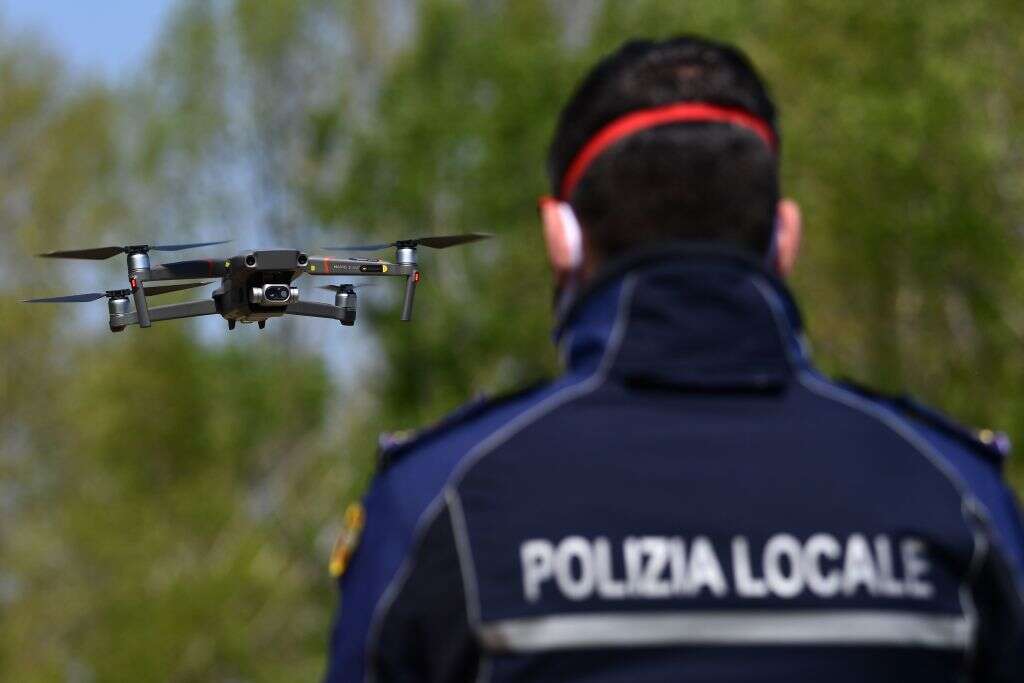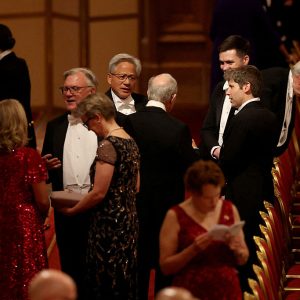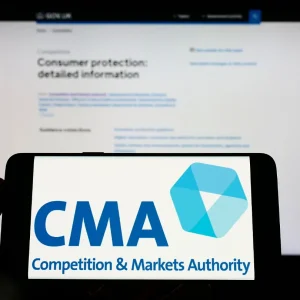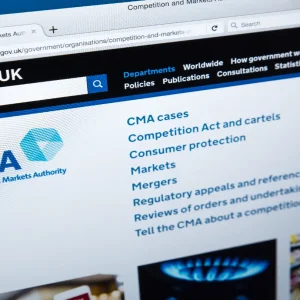
At this height, the neighbourhood below looks like a model village. Amid the grey roofs and green lawns of downtown Chula Vista, our eyes focus on a white sedan reversing at speed to follow a motorcycle. The car stalks the motorcyclist out of the residential area and into the city proper, until they reach a commercial district. There, the motorcyclist begins to park up, only to be hit by the sedan, sending the former’s driver flying onto the sidewalk. An argument ensues off-camera, only to be quickly resolved by the dispatch of a local police officer.
This was one of many scenes captured by the drones of the Chula Vista Police Department since it began its deployment of unmanned aerial vehicles (UAV) in 2019. Under its ‘Drone as First Responder’ initiative, it aims to use its small fleet of quadcopters as an extra pair of eyes in the sky, helping to do everything from spotting suspects during a pursuit, alerting officers to petty crime, to monitoring traffic flows. According to the New York Times, the department uses drones as part of its response to callouts an average of 15 times a day. The technology carried by its UAVs is also growing increasingly sophisticated. That same report revealed the department’s deployment of drones capable of following cars or individuals autonomously.

The Chula Vista Police Department is not alone in its enthusiasm for drone technology. Across the United States, law enforcement agencies are deploying UAVs to not only help officers apprehend suspects, but also to monitor large crowds, conduct photogrammetry after car accidents, and assist members of the public in dangerous situations. Drones can also help to modulate police responses to high-risk situations. Miriam McNabb, a contributing editor at trade publication DroneLife, first learned about how small drones helped SWAT teams plan for a raid from a police officer in Greenville, South Carolina. She asked him what they were searching for on the drone’s camera feed. “He said, ‘Toys’,” she recalls – evidence of children in the vicinity and the need for a softer approach.
This appetite for UAVs is matched by police in Europe and Asia, where drones have been deployed in increasing numbers to fight crime, save lives and occasionally admonish lockdown violators. These deployments are rapidly becoming the most public demonstration of what drone technology can accomplish over large distances, something only hitherto glimpsed at by the activities of enterprising cameramen and enthusiastic hobbyists.
As such, the use of UAVs at scale by law enforcement is a harbinger for much larger and more varied deployments of the technology by private companies. Precedents for how to fly safely and autonomously over long distances, and manage data acquired during a flight are already beginning to be answered by pilots from local and national law enforcement agencies. These examples are not without controversy. Last summer, it emerged that police UAVs had been used to monitor Black Lives Matter protests in 15 cities. In at least two cases, Predator drones used for border surveillance duties by the Customs and Borders Protection agency were diverted to provide aerial intelligence on the crowds.
This worries activists like Chris Cole, founder of Drone Wars UK. In his view, widespread use of drones in law enforcement could set damaging precedents for corporate applications. “I think businesses will be looking… to pick up a template or model from elsewhere” in their deployment of UAVs, he says. “They’ll just copy how they [law enforcement] did it.”
Eye in the Sky
Law enforcement agencies have certainly witnessed the dangers of ungoverned drone use first hand. Since the widespread commercial sale of UAVs began in the early 2010s, criminal gangs have embraced the technology’s potential for reconnaissance and smuggling drugs and other contraband over the heads of border and prison guards. Then there are the inept hobbyists who either don’t know the rules or don’t much care, and end up triggering security alerts at airports or other restricted areas.
“Either way, that’s a clear challenge to the police,” explains Professor Peter Lee of Portsmouth University, an expert adviser to the UK All-Party Parliamentary Group on Drones. Lee was involved in recent consultations on UAV usage between the public, police and the Department of Transport. “There were three focus groups over several months, and the biggest concern with the police and with the public was, how do you identify a drone and how do you identify the person using it?”
In the UK, the answer has been a registration system, paired with prohibitions on flying drones into restricted airspace, over crowds of people, or over emergency services at work. As drone technology evolves, however, new thinking has emerged on how to operate UAVs beyond the line of sight of the operator. For safety reasons, this is currently illegal in both the US and the UK, but those rules are beginning to relax as more drones are equipped with the ability to ‘detect and avoid’ other objects.
Law enforcement is already embracing these new capabilities, with the FAA granting waivers to multiple police departments to operate UAVs outside line of sight. In the UK, meanwhile, the Civil Aviation Authority has granted permission for the first ‘beyond line of sight’ trial at three designated landing sites. The Ministry of Defence, meanwhile, will begin trials of its new Protector drone in July, which is also equipped with ‘detect and avoid’ functions. If these tests are successful, they could form the skeleton of a new framework for commercial drone usage, designating specific corridors across UK airspace for autonomous UAVs to operate.
This greater autonomy will open up a whole range of use cases for drones by law enforcement, McNabb adds, and free up key personnel for more hands-on duties. “In a commercial setting, you could say, ‘Hey, we work in a construction site, we’re going to hire a drone pilot to come in three times a week and fly the site’,” she explains. “That’s no problem. But you can’t have a commercial drone pilot who’s not a police officer involved in a police operation. It has to be a policeman.”
Privacy risks of drones
These tests will provide a very visible demonstration of the technical capabilities of the latest drone. What is less clear, though, is how police forces are handling the data they collect, often through UAV-mounted video cameras.
McNabb isn’t very worried about potential privacy abuses by police drones. There are abundant precedents on how to use CCTV evidence, he argues, while laws protecting personal privacy already exist in both the UK and the US. “There are very strict rules,” says McNabb, for handling such footage. “Privacy rules are privacy rules, no matter where you get the data from.”
Even so, our understanding of the distinction, if any, law enforcement agencies draw between handling CCTV footage and that acquired by a drone is hampered by a lack of transparency on the departmental level. To find out more, Cole submitted a series of FOI requests to police forces up and down the UK last year. “It was quite clear that the information that the police services were keeping about their use of drones was very poor,” he says. “Some of them didn’t know what type of operations they were being used for.”
It was quite clear that the information that the police services were keeping about their use of drones was very poor.
Chris Cole, Drone Wars UK
For Cole, this lack of transparency is forgivable in the context of serious crime investigations, but other FOI requests revealed that more than two-thirds of police forces surveyed were using UAVs to monitor protests, although many were unwilling to specify exactly how many. For Cole, this suggests a troubling lack of regard for the personal privacy of citizens outdoors. Law enforcement agencies may argue that using a drone to survey an area is no different from using a helicopter, but “for me, the difference is that it’s much more persistent, much more invasive,” says Cole.
This potentially sets a poor example for businesses, whose interest in UAV footage for marketing purposes is increasing. It is already used to advertise real estate, holiday destinations and outdoor events, even though norms about the extent to which such UAVs can photograph individuals without their permission have yet to be fully established. A legal dispute in Michigan, however, may soon set a crucial precedent on the permissibility of recording footage of private property, both for the police and private enterprise. The case, involving a private household arguing that photographs taken by a drone to gather evidence on their illegal salvage yard cannot be used in court under the Fourth Amendment, may end up being decided by the highest court in the land, says Professor Hillary Farber of the University of Massachusetts School of Law.
“There’s still plenty of states that don’t have restrictions on law enforcement” using drones, explains Farber. “If, in fact, the United States Supreme Court decides that use of a drone under 400ft to do surveillance without a warrant is a violation of the Fourth Amendment, that could be really quite important.”
Community consultation on police drones
There is, however, an upside to law enforcement agencies being early drone adopters. Unlike private companies, these organisations – at least in the West – are accountable to government, and by extension, citizens. As such, “those issues around safety and privacy and security come front and centre in a way that they might not have been forced if we were talking about individual hobbyists,” says Arthur Holland Michel, a senior fellow at the Carnegie Council for Ethics in International Affairs.
Indeed, many police departments have been sensitive to public concerns about noise, safety and privacy concerns related to drones. “What we’ve certainly found is that in communities where the police are actually using drones, like Chula Vista, and where they have taken the trouble to go out and explain to the community exactly what they’re doing, the response is excellent,” says McNabb.
While there is evidence to suggest that individual attitudes on drones can be improved through public consultation, it remains in its early stages. “There is a great deal of need, I think, for a public discussion, but also a parliamentary debate, about what is acceptable to the public in regards to drones,” says Cole.
How law enforcement use drones will not, on its own, define the public response to commercial deployment of these machines at scale – in time, they will have their own PR nightmares to contend with. “You hit one stroller and that’s it, drone delivery is done,” says McNabb.
At the same time, Michel says, “in striving to meet [a] high standard,” law enforcement “could indeed provide, if not a template, some guidance or pointers on what can be done, what should be done, and what certainly should not be done” by commercial drone operators in future.
How long law enforcement will serve as an example for private industry in that respect is dependent, in part, on the sophistication of the technology that’s available. It could be only a matter of years before businesses leapfrog the police in their use of drones. “If a telecoms company sees a profit motive to introduce drones into their workflow, they’re going to do it,” says McNabb. “If a publicly funded public safety organisation sees the need for drones, they have to go through a two-year application process to get the money.”
For the moment, however, the leaders in this area will remain the police forces operating on the frontiers of what is legally and technologically possible. It is they who will define the guardrails on where, when and how to fly UAVs, but also test the public appetite for a future where commercial drones become an integral part of daily logistics.






